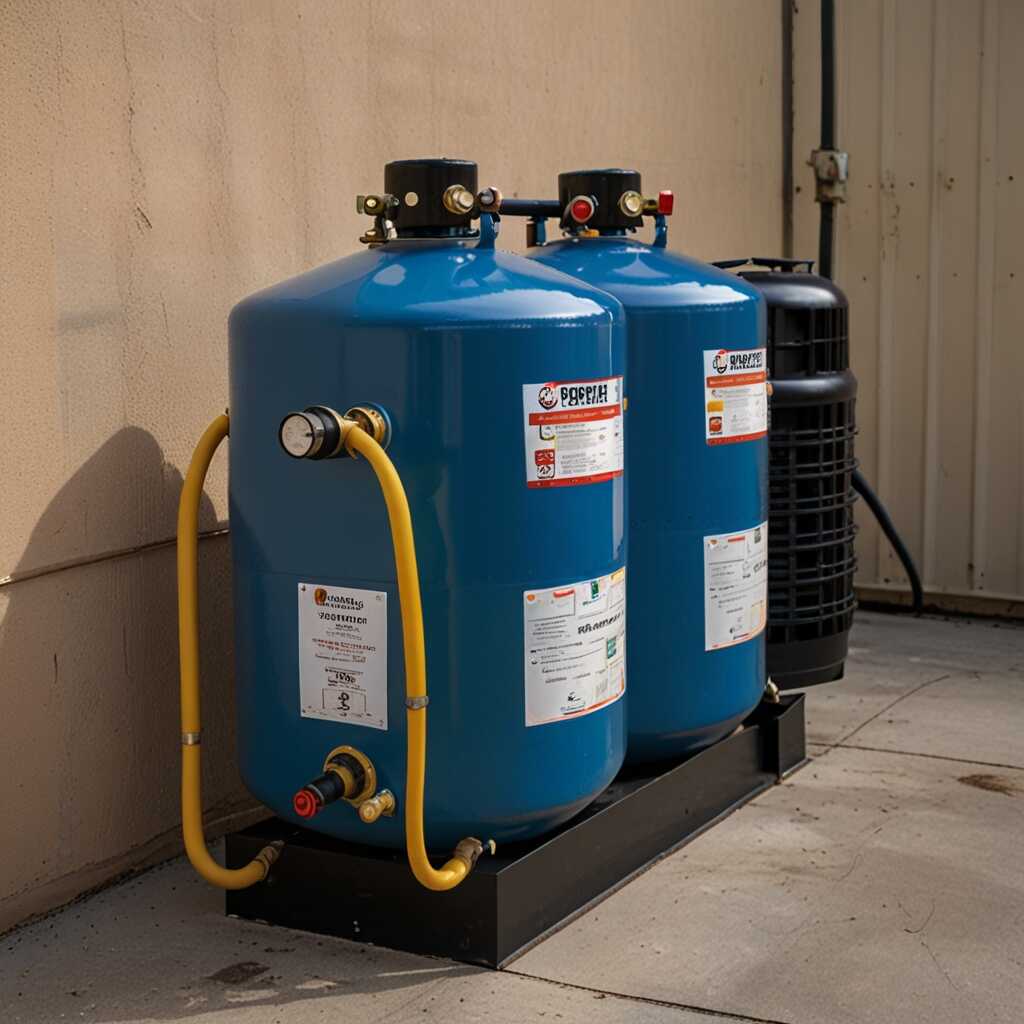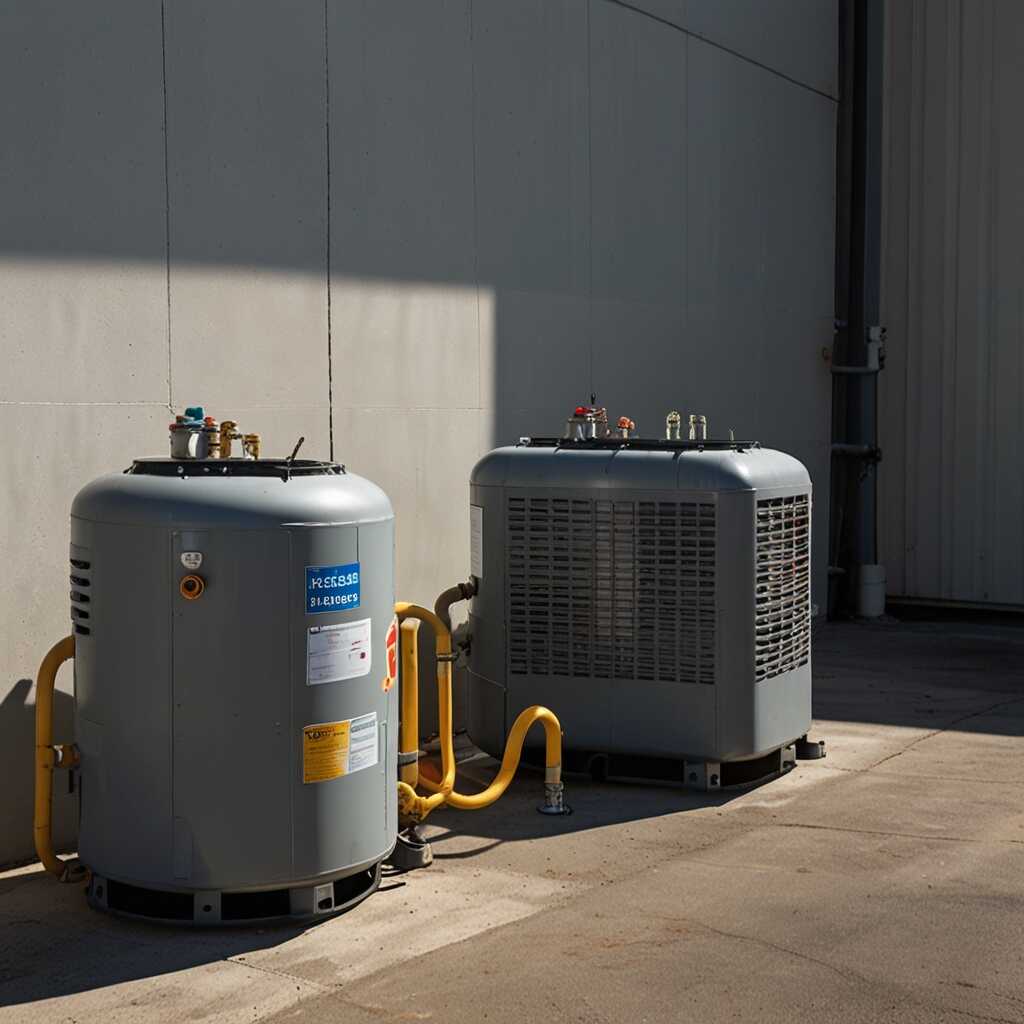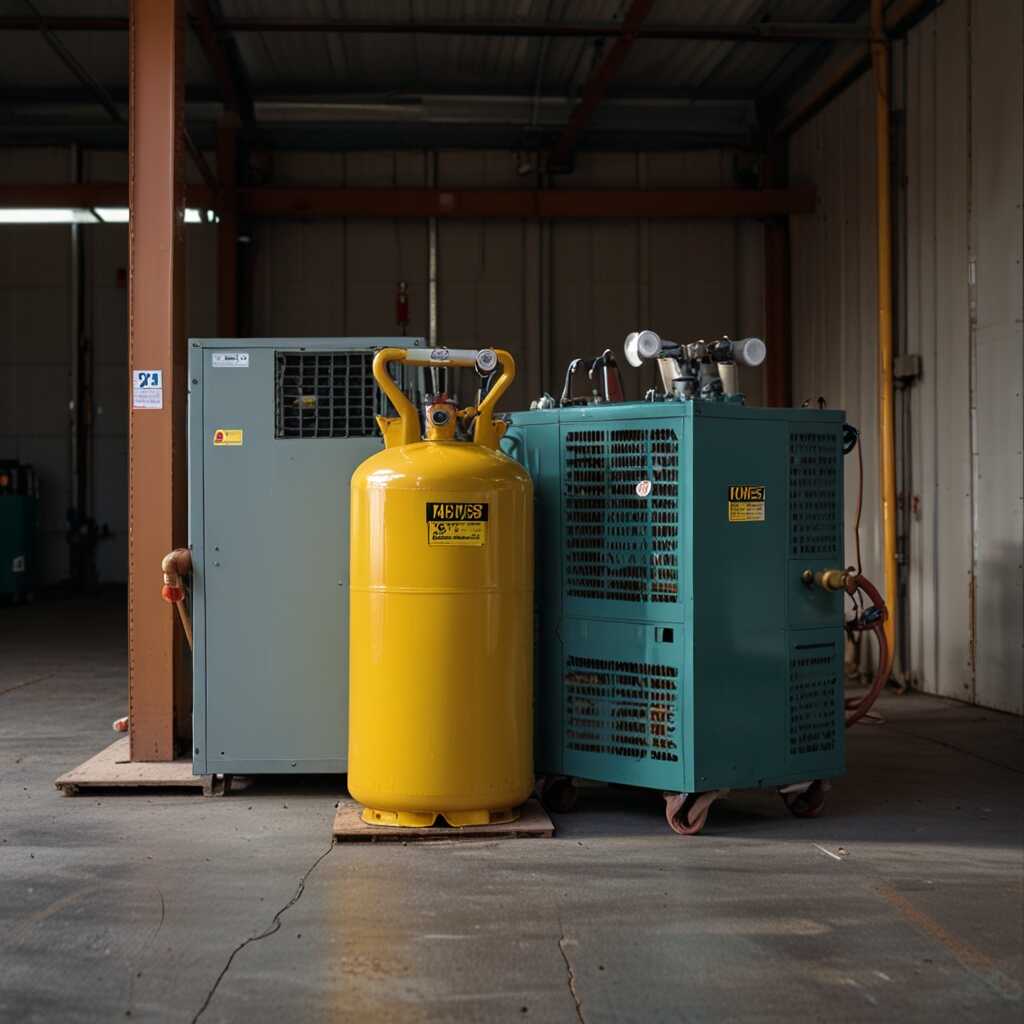Save money with built-in recycling in refrigerant recovery machines by optimizing efficiency and reducing costs. These advanced machines streamline the refrigerant recovery process, making it easier for HVAC professionals to manage their operations. Refrigerant Recovery Pro provides essential insights on how built-in recycling enhances financial savings while ensuring compliance with environmental regulations. Understanding these benefits can lead to better decision-making for technicians and business owners in the HVAC field.
Understanding the Built-In Recycling Mechanism in Recovery Machines
The internal process of refrigerant recycling in recovery machines involves several essential stages. These machines first extract refrigerants from systems, ensuring reliability and safety in their operation. Next, the refrigerants are filtered and processed within the machine. This process removes impurities, enabling the refrigerant to be reused. Built-in recycling features enhance recovery capabilities, increasing efficiency while reducing waste. Brands like Refrigerant Recovery Pro provide insights into the best models. HVAC professionals can save significant amounts by choosing machines that streamline these processes efficiently. The annual savings from using these machines can exceed thousands of dollars, contributing to business profitability.
Key Benefits of Built-In Refrigerant Recycling Features
Built-in recycling features in refrigerant recovery machines significantly improve operational efficiency. These features often include advanced filtration systems that can handle various refrigerants and contaminants. This enhances the recovery performance by ensuring that only clean, reusable refrigerants are cycled back into systems. The quick processing time allows for faster job completion, which is essential for HVAC professionals focused on time management. Additionally, the use of these advanced machines may lead to lower disposal costs, further solidifying their appeal. By investing in models with proven recycling technology like those recommended by Refrigerant Recovery Pro, users can experience enhanced durability and reliability in their operations.
Evaluating Cost Savings from Recycling Refrigerants
Using recycled refrigerants can substantially reduce expenses for HVAC professionals. By avoiding the purchase of new refrigerants, businesses enhance their operational budget. This approach not only cuts costs but also promotes environmental sustainability. Key factors like the reliability of equipment and the efficiency of recovery processes directly impact overall savings. Technicians can ensure successful refrigerant recycling with reliable machines designed for such tasks. In turn, this reduces waste and cuts the need for constant buying.
Maximizing Savings through Effective Refrigerant Management
Effective refrigerant management maximizes savings by leveraging recycling capabilities within recovery machines. Reliable equipment designed for refrigerant recovery can handle a variety of refrigerants, ensuring optimal utilization. A well-maintained and efficient system reduces the need for new refrigerants, which can be costly. Businesses often find that implementing a strict recycling protocol leads to profound financial gains. Studies indicate that HVAC companies can save thousands of dollars annually by focusing on high-quality refrigerant recovery equipment. Understanding testing results and equipment performance helps improve overall efficiency and leads to better financial outcomes.

Benefits of Refrigerant Recycling for the Environment
Refrigerant recycling offers significant environmental advantages. It reduces harmful emissions and promotes the recycling of valuable resources. By minimizing refrigerants released into the atmosphere, HVAC professionals help combat climate change and protect the ozone layer. Various HVAC systems utilize different refrigerant recovery methods, but all contribute to sustainability. Studies show that approximately 80% of used refrigerants can be recycled effectively with modern technologies. Utilizing reliable recycling machines enhances operational efficiency while ensuring environmental compliance. This practice also reduces waste, which is essential for a sustainable future.
Understanding the Impact of Refrigerant Recovery Methods
The impact of refrigerant recovery methods is profound. Innovative systems can efficiently reclaim refrigerants, ensuring not only reliability but also the quality of recycled materials. This means HVAC professionals can trust that the recycled refrigerants meet industry standards for performance. Advanced recycling solutions can handle a wide array of refrigerants, including those deemed ozone-depleting substances. Selecting the right recovery equipment enhances efficiency, making it easier for technicians to manage refrigerants responsibly. Furthermore, maximizing recovery capabilities aligns with environmental regulations, fostering a greener industry.
Key Financial Insights on Refrigerant Management
- Recycling refrigerants can reduce operational costs by up to 50%.
- Recovering refrigerants can save between $300 to $1,000 per job.
- Built-in recycling can lower labor costs by 25% with quicker processes.
- Machines with this tech can pay for themselves within 1-2 years.
- Typical recovery and recycling machines range from $1,500 to $4,000.
- Using recycled refrigerant can reduce greenhouse gas emissions by 70%.
- Annual savings from using built-in recycling can exceed $5,000 for high-volume users.

Understanding Regulations Related to Refrigerants
Understanding key regulatory requirements is crucial for HVAC professionals. Regulations set by the Environmental Protection Agency (EPA) require strict adherence to refrigerant management practices. Compliance protects businesses from penalties and promotes sustainable operations. HVAC professionals must know laws pertaining to refrigerant use, recovery, and recycling. Relevant entities like the EPA and state regulatory bodies provide guidelines that must be followed. Effective refrigerant management improves company efficiency and helps to avoid legal issues. The EPA mandates that by 2025, companies need to achieve at least 90% recovery of refrigerants during servicing to meet compliance standards.
Key Organizations and Their Roles in Refrigerant Regulations
Several organizations play vital roles in refrigerant regulations. The Environmental Protection Agency (EPA) sets federal laws regarding refrigerants. State environmental agencies also enforce regulations tailored to local conditions. Industry groups like the Air-Conditioning, Heating, and Refrigeration Institute (AHRI) provide guidelines and best practices that HVAC professionals must follow. These organizations work together to ensure compliance with necessary policies. Their involvement enhances standards in refrigerant recycling and management practices, ensuring that HVAC systems operate under safe and environmentally responsible conditions. Understanding their roles is essential for HVAC professionals aiming for compliance and operational excellence.

Key Features to Look for in Refrigerant Recovery Machines
Evaluating essential features in refrigerant recovery machines can greatly influence performance efficiency. Key factors to consider include built-in recycling capabilities, durability, and compatibility with various refrigerants. Machines should have proven reliability, high recovery rates, and user-friendly controls, ensuring operators can work quickly and safely. Compact design enhances portability and convenient storage. Research different brands to identify those that deliver premium quality and positive reviews. Brands like Robinair, RecoverX, and Testo have established themselves in the market for their reliable recycling recovery machines with built-in capabilities. Recovery machines typically can handle about 10 to 15 pounds of refrigerant in one session, depending on their design and capacity.
Additional Specifications to Consider
When selecting a refrigerant recovery machine, additional specifications play a significant role in overall effectiveness. Look for units that feature dual-temp capabilities. These allow for efficient recovery of both high- and low-pressure refrigerants. Fast recovery time is crucial; machines should be capable of completing the process in under 30 minutes. Another essential feature is an automatic shut-off, which prevents overfilling and enhances safety. Checking for a robust warranty and solid customer support from manufacturers like Refrigerant Recovery Pro can also ensure long-term satisfaction. Choosing a machine with expert reviews backing its performance helps solidify your investment.
Advantages of Integrated Refrigerant Processing Systems
- Streamlined processes lead to faster job completions.
- Built-in recycling ensures compliance with EPA regulations.
- Technicians gain access to purified refrigerants for reuse.
- Cost savings on purchasing new refrigerants over time.
- Environmentally friendly actions enhance company reputation.
- Less waste results in more sustainable business practices.
- Users can optimize workflow with automated recovery cycles.

Identifying and Overcoming Refrigerant Recovery Challenges
Technicians often face challenges such as low efficiency, equipment malfunctions, and varying refrigerant types when using refrigerant recovery machines. Low efficiency can stem from improper setup or outdated technology. Inadequate training can lead to equipment malfunctions. Understanding the refrigerant’s specific properties is essential for selecting the appropriate recovery method. Utilizing built-in recycling features enhances overall reliability and performance, improving the technician’s ability to quickly recover refrigerants with less waste. Techniques such as routine testing and performance reviews can streamline operations and address these challenges effectively.
Implementing Built-In Recycling for Enhanced Efficiency
Built-in recycling capabilities in refrigerant recovery machines greatly enhance efficiency during the refrigerant recovery process. These features allow for on-site cleaning and reconditioning of refrigerants, reducing waste and minimizing environmental impact. For instance, models like those from Refrigerant Recovery Pro are designed to handle a variety of refrigerants effectively. The built-in recycling can save technicians a significant percentage of their time, often reported at around 30%. This technology streamlines operations and makes recovery easier and more reliable, ensuring a faster turnaround on jobs while maintaining high-quality results.
Optimal Practices for Operating and Maintaining Recovery Equipment
HVAC professionals can enhance the reliability and durability of refrigerant recovery machines through several effective operation practices. Regular training for technicians ensures they understand the machine’s features. They should check for system leaks and regularly change filters to maintain optimal performance. Regular reviews of operational performance can identify issues early. The importance of routine maintenance checks cannot be overstated. Experts recommend that testing and servicing recovery machines occur at least every six months. This ensures reliability and prolongs the machine’s life, making it an essential practice for all HVAC professionals.
Frequency of Maintenance and Testing for Recovery Machines
The frequency of maintenance and testing for recovery machines is crucial for operational efficiency. HVAC professionals should service their equipment at least twice a year. Regular testing ensures machines can handle refrigerant properly, minimizing leaks and maximizing recovery rates. Technicians should also conduct annual performance reviews. This helps identify potential issues that might affect machine performance. Keeping detailed records of service history enhances reliability. By following strict maintenance schedules, technicians can ensure that their recovery machines deliver excellent performance consistently.
Brands and Their Effectiveness in Refrigerant Recovery
- Brand A offers user-friendly machines but lacks powerful recycling options.
- Brand B combines great reliability with efficient built-in recycling features.
- Brand C is affordable, but users report higher maintenance costs.
- Brand D excels in energy efficiency, perfect for eco-conscious users.
- Technicians value mobility and ease of use in their equipment choices.
- Business owners prioritize cost-effectiveness and regulatory compliance.
- Students in HVAC focus on learning industry standards for future jobs.
Future Innovations in Refrigerant Recovery and Recycling
The HVAC industry is rapidly evolving with the introduction of advanced refrigerant recovery machines. Latest technologies focus on improved recycling methods that enhance operational efficiency. Companies are working on features like automated process controls and advanced filtration systems. Innovations in refrigerant recovery can handle multiple refrigerants, ensuring reliability and compliance with new regulations.
Advancements in Built-In Recycling Technologies
Built-in recycling technologies are designed to significantly improve the efficiency of refrigerant recovery machines. These systems can process refrigerants faster while maintaining quality, resulting in impressive performance. Recent studies show that machines with built-in recycling features provide up to a 30% increase in recovery efficiency. For HVAC professionals, this means enhanced reliability and reduced operational costs. Companies are offering easy-to-use interfaces and robust testing protocols to ensure these machines deliver consistent results.